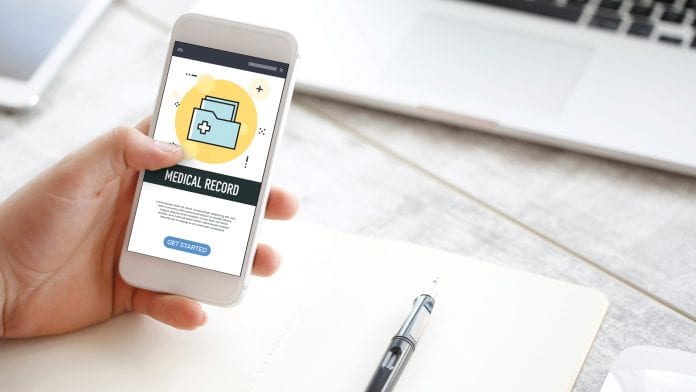
Estonia’s Minister of Health and Labour Riina Sikkut tells Health Europa what we can learn from the Estonian e-health system.
The Estonian e-health system is among the world’s most ambitious and a clear example of why this small EU country is widely hailed as one of the most advanced digital nations on the planet. Already, more than 95% of the data generated by hospitals and doctors has been digitised, and citizens can enjoy easy access to their own medical records, prescriptions, and the most suitable health professional.
This system – which not only improves the cost-effectiveness, sustainability and efficiency of the Estonian healthcare service but also facilitates the transition to preventive, rather than curative, medicine – is underpinned by blockchain technology, a crucial pillar in ensuring the integrity and security of all patient data.
To find out more, Health Europa spoke to Riina Sikkut, the Minister of Health and Labour of the Republic of Estonia, who here discusses the main advantages of the Estonian e-health system, it’s e-health solutions, the move towards Healthcare 4.0, and what other countries can learn from Estonia’s example.
What would you describe as the main benefits of the e-health system in Estonia – to patients, healthcare providers and the government alike?
E-health solutions offer numerous benefits. For one, they can help us use our time more efficiently. A simple example of this in action would be the Estonian e-prescription system. Patients no longer need to spend valuable time seeing a doctor for a repeat prescription: they can just call their doctor and then head straight to the pharmacy to fill their digital prescription. From the doctor’s perspective it takes only ten to 15 seconds to issue a repeat prescription, which is again time-saving.
A more complex example would be our e-ambulance system, which is hooked up to our e-health system and provides emergency care providers pre-filled forms of health data about the patients they are heading off to save. This yet again saves time but also helps our professionals be more effective on the spot.
When it comes to driving quality in medicine, another digital solution we are quite proud of is our drug interaction and counter indication decision support software. This software is connected to our e-prescription database, so whenever a doctor tries to prescribe something that might interact with one of the medicines a patient is taking, they get a warning from the system. This helps avoid unnecessary side effects or adverse events related to medications. We have estimated that around 15-17% of prescriptions get changed after these warnings are displayed.
For the patient, digital health solutions, particularly in the era of GDPR, are a way to take control of their own data. This has long been a cornerstone of the Estonian e-health system: patients can access their data, see who else has accessed it, and also close off their data from the system. In addition, patients can use various online services, such as applying for a health certificate, which significantly reduces the time spent on getting this simple yet essential document.
For the state, e-health is a way to make better decisions as it facilitates the generation of data that can be used in policymaking. For example, we can and do use digital prescription purchasing data to estimate the burden out-of-pocket payments are having on our population.
E-health is also an investment that helps us do more with fewer resources, thereby ensuring the sustainability of our healthcare system. It is a key component in making the transition from primarily curative medicine to preventive medicine, which is significantly more cost-effective.
Estonia has recently launched two major clinical pilots in personalised medicine. These pilots are combining genomic and other health data to better predict and prevent cardiovascular disease and breast cancer. The long-term goal of these pilots is to develop algorithms that can be fed into clinical decision support software, which would in turn be made available to general practitioners. This way we can empower doctors to use genomic data to provide more targeted prevention and care.
The Estonian National Health Information System has been in operation since 2008; how has it evolved over the last ten years?
Estonia has developed a number of e-services throughout the years. The most widely used e-services are the Electronic Health Record, the Patient Portal, the digital prescription, the drug interaction decision support, e-consultation and e-ambulance. All citizens have had a nationwide Electronic Health Record since 2008. Doctors are mandated by law to transmit data to this online health record. All of a patient’s relevant health data is gathered in the record such as their recent appointments, analyses and diagnoses, time-critical data such as allergies, prescriptions etc. A patient’s Electronic Health Record is accessible to all licensed medical practitioners in Estonia, so doctors from one practice can easily access patient data from another practice when treating a patient….
Want to read more about the evolution of the Estonian National Health Information System? Or how Estonia utilised blockchain tech to secure and protect private and sensitive healthcare data?
Stay tuned for more, as this article will appear in issue 8 of Health Europa Quarterly, which will be published in February 2019.
Riina Sikkut
Minister of Health and Labour
Ministry of Social Affairs
Republic of Estonia
Tweet @SoMinEstonia @e_estonia
www.sm.ee/en







